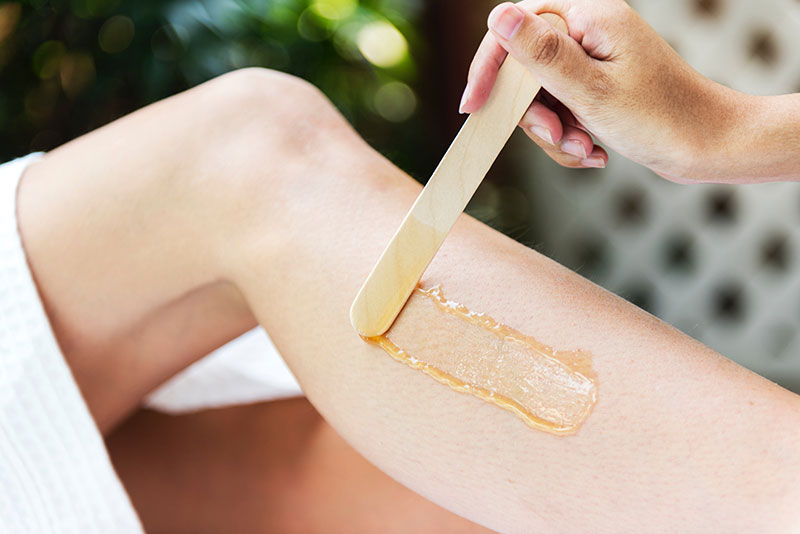Nearly every woman who comes into a Ministry of Waxing salon wants to have smooth bikini line, whether it’s for hygiene or vanity purposes. But there are risks that come with an otherwise routine procedure and these risks shouldn’t be dismissed even if you have already endured several waxing sessions.
Reasons for the Riskiness
While waxing isn’t a life-threatening procedure – no needles, no incisions, and no penetration involved – it can cause serious infections requiring prompt and appropriate medical attention. Many of these infections are manifested within 24 hours after the session, too.
Cellulitis, for example, is a life-threatening bacterial infection of the skin and its underlying tissues. Its symptoms include a 102-degree fever, chills, and pain in the thigh, among others, which many affected persons initially think as the common cold. Even with hospitalization wherein painkillers and antibiotics are intravenously injected into the body, the recovery period can be challenging, usually taking weeks or months for physical and emotional recovery.
Does it seem like a huge price to pay for a small vanity, especially one that won’t be seen unless in a bikini or nude? If it does, then you may have second thoughts about getting your first bikini wax or getting another one. But here’s the thing: The risk of infection is nearly negligible with most clients getting excellent results with only a slight tenderness, soreness, and redness in the bikini area.
Still, it’s important to know what makes bikini waxing risky. For one thing, keep in mind that the pubic hair protects the mucous membranes and sensitive skin in the genitals. When you wax the area, the layer of protection (i.e., public hair) is stripped away and so the genitals become more prone to infections.
The pubic hair acts as a natural barrier against the entry of foreign objects into the genitals, as well as decreases the contact between the skin and pathogenic viruses, bacteria, and fungi including yeast. It even aids in controlling the moisture in the genitals so there’s less risk of yeast infections.
For another thing, waxing creates redness (i.e., inflammation) in the skin that can trap bacteria underneath. Tiny pieces of the skin’s topmost layer are also pulled away resulting in entry points for bacteria to enter the body. The result in increased risk for skin infections including ingrown hairs, staph infections, and folliculitis.
Again, there’s no reason to avoid bikini waxing completely. The trick here is to ensure that you are at little to no risk of becoming infected with a skin infection like cellulitis or folliculitis by keeping the following tips in mind.
Come Prepared
Before coming for a waxing session, you should visit the waxing salon first, especially if it’s your first time in it. But even if you have patronized a waxing salon for several months, you should always determine whether it’s still up to par or it meets your needs. Many waxing salons become complacent in the delivery of their services to the detriment of their clients, and so it’s important to be vigilant on your part.
Visit a waxing salon, ask the staff about their licenses and certifications, and observe the practices of the staff. Does the staff clean the tools and equipment regularly? Does the salon maintain a hygienic environment from the reception room to the waxing rooms? Does the salon explain the waxing process to their clients?
Ask about the types of wax and the procedures. We suggest hard wax since it has a gentle effect and it adheres not to the skin but to the hair only. We don’t recommend the speed wax for beginners because while it’s easy and fast, it’s more likely to tear the skin and cause pain.
Tip: Ask about sugaring since it’s gentler on the skin than waxing. Choose natural waxing products, too, such as a chemical-free wax containing only water, sugar, glycerin, and lemon juice.
Be sure to be on the lookout for these red flags, too.
- The aesthetician doesn’t thoroughly wash her hands with soap and water or apply a generous amount of hand sanitizer up before starting the waxing process. Such a blatant disregard for hygiene will likely increase your risk of infection.
- The aesthetician double dips into the wax. The aesthetician doesn’t use brand-new spatulas with every swipe to your skin. These are big no-no because it introduces bacteria and other pathogens into the pot of wax.
- The aesthetician doesn’t check the wax’s temperature on her wrist before applying it to your skin. You will likely be suffer from minor burns with such a disregard for your safety.
Of course, you have to adopt sensible safety measures to reduce, if not eliminate, the risk of post-waxing infection. You may apply a non-prescription topical antibiotic cream and an anti-inflammatory hydrocortisone cream. You should also avoid wearing tight clothes, taking long baths, and becoming overheated, among others.
And if you experience the signs of an infection, don’t hesitate to call your doctor! Beware of redness, swelling, peeling of the skin, itching or burning sensation, and/or a fever.
